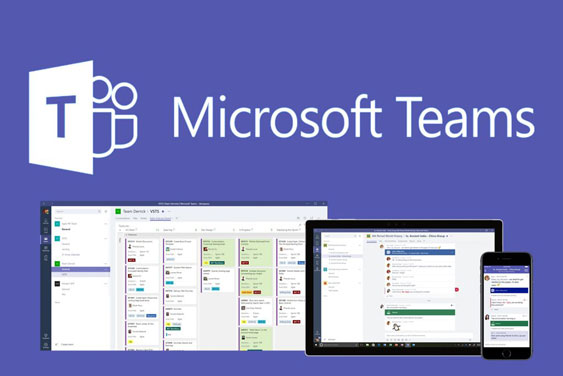From Microsoft Skype for Business to Microsoft Teams

Microsoft, a year ago, announced that they are bringing the capabilities of Skype for Business in the cloud into Microsoft Teams to deliver a single hub for teamwork, with built-in, fully integrated voice and video.
According to Microsoft, “As users are working on more teams, we see the opportunity to more seamlessly integrate our communication capabilities into Teams so users can have a single place for their conversations, contacts, and content. We believe Teams also provides a modern cloud infrastructure that enables us to take advantage of our assets for artificial intelligence such as AI, Microsoft Graph, and LinkedIn to deliver intelligent communications. With Teams, we’re creating new experiences for meetings and calling, including the prep, delivery, and post–follow-ups.”
What will this mean for current users of Skype for Business?
While the recommendation for Office 365 users is to move to Teams, the Skype for Business on premises infrastructure is not going away anytime soon, in fact, a new version (Skype for Business Server 2019) is in preview and should be released later this year. Even though there is a new version of the on premises solution, it is clear that Teams is where the innovation dollars are going.
What Can Teams Bring to Your Organization?
Teams started as Microsoft’s implementation of Slack with deep integrations into Office 365 applications. As of September 2017, Microsoft reported 125,000 organizations were using it in one form or another.
PLATFORM FOR TODAY’S WORK TEAMS
Teams is built for today’s diverse workforce. There have been many changes across the methods that organizational teams use to communicate and collaborate. Teams provides an open, digital environment that makes work integrated, visible, and accessible across the board, keeping everyone involved in the know.
Microsoft Teams provides a versatile conversation experience using persistent threaded conversations. Every conversation within Teams automatically becomes information assets and are saved, searchable via Microsoft Graph, and visible to everyone on the team. It also provides the ability of launching private discussions.
Teams’ deep Skype integration brings video and voice capabilities and a wide variety of visual communication tools that help increase engagements among team members.
COMPLETE ONLINE MEETING SOLUTION
- Online Meetings – Host audio, video and web conferencing with anyone inside or outside the organization. Features include scheduling assistant, note taking, desktop sharing, file sharing, and chat messaging.
- Live Broadcasts – For big meetings, go live with Teams Meeting Broadcast. Host webinars, all-hands meetings, and other one-to-many presentations with up to 10,000 attendees internal or external to the organization.
- Meeting Spaces – Extend Teams with one-touch join to every meeting space with Microsoft Surface Hub.
- Cloud Video Meetings – Microsoft Partners are delivering video solutions which seamlessly connect H.323 compatible videoconferencing solutions to Teams meetings.
- Audio Conferencing – Join meetings from a phone or use Teams to dial anybody directly. Meetings include a local dial-in number spanning 400+ cities across the globe.
PRODUCTIVITY
The ability to meet virtually anywhere is an important and cost-effective feature for businesses. Teams increases productivity by bringing together conversations, meetings, files, Office applications, and third-party integrations, enabling the organization to participate in more productive meetings with less context switching. It provides a view of scheduled meetings, the timing, the subject, and a list of other persons who’ll be attending.
Teams also provides simple and easy to use mobile apps that allow chat with teams via text, have a voice conversation, or a video meeting.
COLLABORATION
Teams makes teamwork easy. Teams was built around the idea of leveraging the maximum capability of Microsoft Graph, so workgroups and teams have the ability to share insights, intelligence, and data anywhere within the Microsoft Office 365 suite; PowerPoint, Excel, Word, Planner, OneNote, SharePoint, Delve, and Power BI.
CUSTOMIZATION
Teams can be tailored to meet unique business and cultural needs of the organization. Teams provides a platform with options for extensibility and open APIs. Through the leveraging of Microsoft Exchange Connector’s model, Teams can provide updates and notifications from third-party services such as GitHub and Twitter. Along with Microsoft’s BOT Framework, organizations are able to create and customize applications and intelligent services to integrate with Teams.
SECURITY
Teams stands apart from its competitors and ensures peace of mind. All of Office 365’s platform services are built with cutting-edge security and compliance capabilities. The data is encrypted in flight and at rest. Teams and all Office 365 services meet compliance standards including ISO 27001, HIPPA, SOC 2, and the EU Model Clauses. The Teams account is provisioned within Office 365 and managed via the Admin console.
In conclusion, Microsoft has taken many of the features provided in Skype for Business and built them into the Teams platform. This platform is built with today’s organizational work teams in mind, providing a complete online meeting solution, increased productivity and collaboration, all built on Office 365’s already secure services infrastructure. Even though Microsoft has announced that Skype for Business will be going away in the future, the on-premises version has one release version left (later this year). Office 365 users are being pushed to Teams instead of Skype for Business in the cloud.
Categories
Search
Blog Categories
Related Resources
Archives
- July 2024
- June 2024
- May 2024
- April 2024
- March 2024
- January 2024
- October 2023
- September 2023
- August 2023
- July 2023
- June 2023
- May 2023
- April 2023
- March 2023
- February 2023
- January 2023
- October 2022
- July 2022
- June 2022
- May 2022
- April 2022
- March 2022
- February 2022
- January 2022
- December 2021
- November 2021
- October 2021
- September 2021
- August 2021
- July 2021
- June 2021
- May 2021
- April 2021
- March 2021
- February 2021
- January 2021
- December 2020
- November 2020
- October 2020
- September 2020
- August 2020
- July 2020
- June 2020
- May 2020
- April 2020
- March 2020
- February 2020
- January 2020
- December 2019
- November 2019
- October 2019
- September 2019
- August 2019
- July 2019
- June 2019
- May 2019
- April 2019
- March 2019
- February 2019
- January 2019
- December 2018
- November 2018
- October 2018
- September 2018
- August 2018
- July 2018
- June 2018
- May 2018
- April 2018
- March 2018
- February 2018
- January 2018
- December 2017
- November 2017
- October 2017
- September 2017
- August 2017
- July 2017
- June 2017
- May 2017
- April 2017
- March 2017
- February 2017
- January 2017
- December 2016
- November 2016
- October 2016
- September 2016
- August 2016
- July 2016
- June 2016
- May 2016
- March 2016
- February 2016
- January 2016
- December 2015
- October 2015
- September 2015
- August 2015
- July 2015
- June 2015
- May 2015
- April 2015
- March 2015
- February 2015
- January 2014
- February 2013




